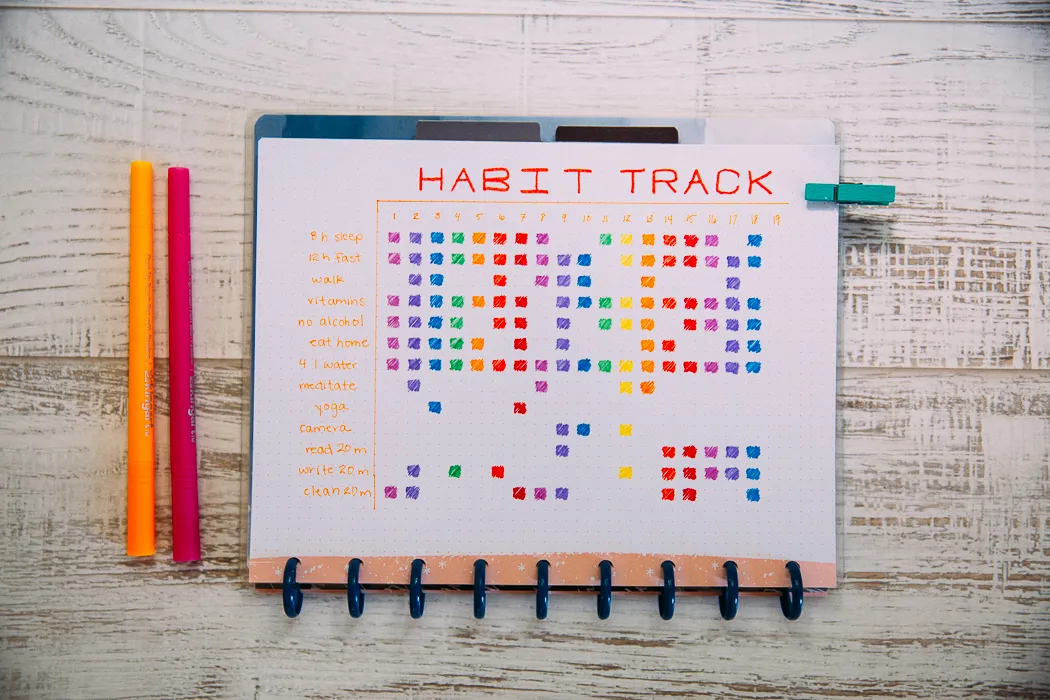Motivation is the engine that drives human behavior. From pursuing career goals to maintaining fitness routines or learning a new skill, staying motivated is essential for long-term success. Yet, motivation is often elusive—it fluctuates, diminishes, and can be easily derailed by distractions, setbacks, or competing priorities.
One of the most powerful tools for sustaining motivation, often overlooked, is habit tracking. Tracking habits involves systematically recording behaviors, progress, and patterns over time. While simple in concept, this practice has profound psychological and practical benefits. By providing structure, feedback, and visual evidence of progress, habit tracking transforms abstract goals into tangible achievements, reinforcing motivation and promoting lasting change.
In this article, we will explore why tracking habits boosts motivation, the science behind it, practical methods, and how anyone can apply these strategies to achieve personal and professional growth.
Table of contents
- The Psychology Behind Habit Tracking
- How Habit Tracking Reinforces Motivation
- Scientific Evidence Supporting Habit Tracking
- Methods for Effective Habit Tracking
- Tips for Successful Habit Tracking
- Real-Life Applications
- The Science of Streaks and Momentum
- Challenges and Solutions
- Case Study: Habit Tracking in Action
- Long-Term Impact
- Integrating Habit Tracking into Daily Life
- Conclusion
The Psychology Behind Habit Tracking
Understanding why habit tracking works requires delving into human psychology. Several key mechanisms are at play:
1. Immediate Feedback and Positive Reinforcement
Tracking habits provides instant feedback on performance. When you mark a completed habit—whether it’s exercising, journaling, or studying—you experience a small sense of accomplishment. This triggers the brain’s reward system, releasing dopamine, which reinforces the behavior and encourages repetition.
2. Awareness and Self-Reflection
Many behaviors are automatic and unconscious. Habit tracking increases self-awareness, allowing you to identify patterns, triggers, and obstacles. By seeing your actions in black and white, you gain insight into what’s helping or hindering your progress.
3. Accountability
When habits are tracked, especially in a visible format like a journal, app, or calendar, accountability increases. Knowing that your progress is being recorded creates a subtle psychological pressure to follow through, even on days when motivation is low.
4. Visual Motivation
Seeing streaks, graphs, or progress bars offers a visual representation of consistency. Humans are inherently motivated by progress cues; a chain of checked boxes or rising graph lines can create momentum and a desire to maintain the streak.
5. Clarity and Goal Alignment
Habit tracking bridges the gap between abstract goals and actionable steps. Instead of vaguely wanting to “exercise more,” tracking converts it into measurable actions—e.g., 30 minutes of jogging, five days a week. This clarity makes goals achievable and reduces overwhelm.
How Habit Tracking Reinforces Motivation
1. Builds Momentum
Consistency breeds momentum. Habit tracking helps you maintain small, regular actions that accumulate into significant progress. Each completed action reinforces the habit loop: cue → routine → reward. The more you track, the more momentum builds, creating a positive feedback cycle that fuels motivation.
2. Enhances Intrinsic Motivation
While external rewards (like praise or money) can be motivating, intrinsic motivation—the internal satisfaction of achieving a goal—is more sustainable. Habit tracking taps into this by allowing you to see your own progress, generating pride and internal reward, rather than relying solely on external validation.
3. Turns Abstract Goals into Tangible Results
Many people fail at long-term goals because they remain abstract and distant. Tracking habits makes progress tangible. A simple mark on a calendar can turn a vague goal like “read more” into measurable daily actions, bridging the gap between intention and achievement.
4. Encourages Consistency over Intensity
Motivation can fluctuate, but habit tracking encourages consistency over intensity. Even small actions recorded daily matter. For example, writing 200 words each day may feel minor, but after a month, it adds up to 6,000 words—a tangible result that reinforces motivation.
5. Highlights Progress and Patterns
Tracking reveals trends—good or bad. Seeing improvements over time can boost confidence and motivation, while identifying obstacles allows for adjustments. Habit tracking provides data-driven insights that guide more effective actions.
Scientific Evidence Supporting Habit Tracking
Multiple studies support the motivational benefits of habit tracking:
- A 2008 study in the American Journal of Lifestyle Medicine found that participants who tracked their diet and exercise were significantly more likely to maintain healthy behaviors compared to those who did not track.
- Research in Psychological Science highlights that visual progress cues, like charts or streaks, enhance intrinsic motivation and encourage goal persistence.
- The concept of “habit stacking,” where tracking one habit triggers reinforcement for another, has been shown to accelerate behavior change by leveraging momentum and accountability.
These findings underscore that habit tracking is not merely a productivity tool—it is a scientifically backed method to enhance motivation and behavior change.
Methods for Effective Habit Tracking

1. Paper Journals or Planners
Traditional journals provide tactile engagement, which many people find satisfying. You can record habits daily, use checkboxes, color codes, or simple streaks to visualize progress.
Tips:
- Keep it simple: track 3–5 habits at a time.
- Use symbols (✓, ✗) or colors to indicate completion.
- Add brief notes to reflect on challenges or wins.
2. Digital Habit Tracker Apps
Apps like Habitica, Strides, or Loop offer interactive habit tracking with reminders, streak tracking, and progress visualization. Many gamify the experience, providing digital rewards for consistent completion.
Tips:
- Set reminders to log habits.
- Use visual charts to monitor long-term trends.
- Integrate with calendars or to-do lists for seamless planning.
3. Bullet Journaling
Bullet journals combine habit tracking with creativity, reflection, and goal setting. You can design habit trackers with monthly grids, trackers, or mood charts, making the process engaging.
Tips:
- Include motivational quotes or mini-rewards.
- Reflect weekly on achievements and challenges.
- Combine habit tracking with goal setting for holistic planning.
4. Gamification Techniques
Rewarding consistency through gamification can enhance motivation. Apps or self-created systems can assign points, badges, or levels for completing streaks. This leverages behavioral psychology principles to reinforce habit adoption.
5. Accountability Partnerships
Sharing habit tracking with a friend or group increases motivation. Knowing someone else is aware of your progress encourages follow-through and can make tracking more enjoyable.
Tips for Successful Habit Tracking
- Start Small
Tracking too many habits at once can be overwhelming. Begin with 3–5 key habits and expand gradually. - Be Consistent
Track every day, even when habits aren’t fully completed. Consistency builds awareness and long-term change. - Reflect Regularly
Weekly or monthly reflection helps identify what works, what doesn’t, and how to adjust strategies. - Celebrate Progress
Acknowledge small wins. Rewarding yourself, even subtly, reinforces the positive feedback loop. - Stay Flexible
Life is dynamic. Habit tracking should accommodate changes and setbacks without judgment. Adapt your approach as needed. - Use Visual Cues
Seeing streaks or graphs is motivating. Place habit trackers where they are visible to maintain awareness.
Real-Life Applications
1. Fitness and Health
- Tracking workouts, water intake, or sleep routines.
- Visual streaks motivate consistent exercise and better nutrition.
2. Personal Growth
- Journaling, reading, or practicing mindfulness.
- Recording daily reflection sessions encourages self-awareness and mental well-being.
3. Professional Development
- Habit tracking can apply to learning new skills, networking, or project milestones.
- It helps professionals stay accountable and measure incremental progress.
4. Behavioral Change
- Breaking negative habits, like smoking or excessive social media use.
- Tracking triggers and successes provides insights and motivation to continue.
The Science of Streaks and Momentum
Humans are streak-driven creatures. Completing a habit multiple days in a row triggers a psychological urge to maintain the streak. This creates momentum, even on days when intrinsic motivation is low.
- Jerry Seinfeld popularized the “Don’t Break the Chain” method, where a calendar streak motivates consistent writing.
- Modern habit tracking apps emulate this principle with streak counters, rewarding consistency over intensity.
The combination of visual cues, momentum, and small rewards makes streaks a powerful motivational tool.
Challenges and Solutions
While habit tracking is effective, users may encounter obstacles:

1. Overtracking or Obsession
Tracking can become stressful if overemphasized. Solution: focus on awareness, not perfection. Missed days are opportunities to learn, not failures.
2. Complex Systems
Overly complicated trackers may discourage use. Solution: keep tracking simple and intuitive.
3. Neglecting Reflection
Tracking without reflection reduces effectiveness. Solution: schedule regular review sessions to analyze patterns and adjust strategies.
4. Dependency on External Tools
Relying solely on apps may reduce intrinsic motivation. Solution: combine app tracking with mental awareness and personal reflection.
Case Study: Habit Tracking in Action
Consider Maya, a professional aiming to improve her fitness and work productivity:
- Initial habits: 30-minute daily workouts, journaling, reading for 20 minutes.
- Method: Used a bullet journal with checkboxes and color codes.
- Outcome: Within three months, she maintained streaks on all three habits, reported increased energy, and felt a sense of accomplishment. Tracking made progress visible and reinforced motivation even when work was hectic.
This demonstrates the real-world power of habit tracking: it transforms intentions into measurable actions and builds confidence over time.
Long-Term Impact
Habit tracking is not merely about completing daily tasks—it reshapes mindset. Over time, users develop:
- Greater self-discipline
- Enhanced motivation
- Improved self-awareness
- Stronger confidence in achieving goals
- Resilience against setbacks
Tracking turns abstract ambitions into concrete, actionable steps, fostering sustainable growth.
Integrating Habit Tracking into Daily Life
- Morning Planning: Identify habits to focus on each day.
- Daily Logging: Track completion at a consistent time.
- Weekly Review: Assess patterns, successes, and challenges.
- Adjust Goals: Scale habits up or down based on progress.
- Celebrate Milestones: Reward consistency to reinforce motivation.
By embedding tracking into daily routines, it becomes a natural part of life rather than a chore.
Conclusion
Motivation is a critical determinant of success, yet it is often fragile. Habit tracking provides a simple, practical, and scientifically backed solution to sustain motivation over time. By offering feedback, increasing awareness, creating accountability, and visualizing progress, habit tracking transforms abstract goals into achievable steps.
Whether it’s improving health, developing skills, enhancing productivity, or fostering personal growth, tracking habits empowers individuals to stay consistent, celebrate progress, and maintain motivation even when intrinsic drive fluctuates.
Ultimately, habit tracking is more than a tool—it is a mindset. It encourages conscious action, reflection, and self-improvement, helping individuals achieve lasting change and realize their full potential.
